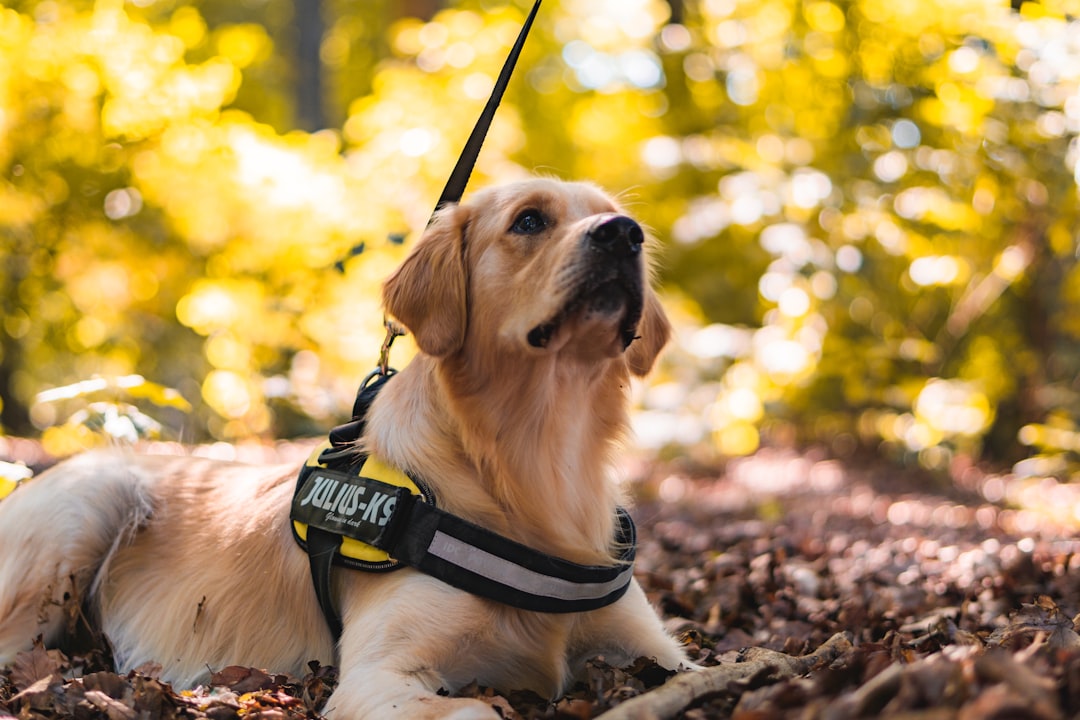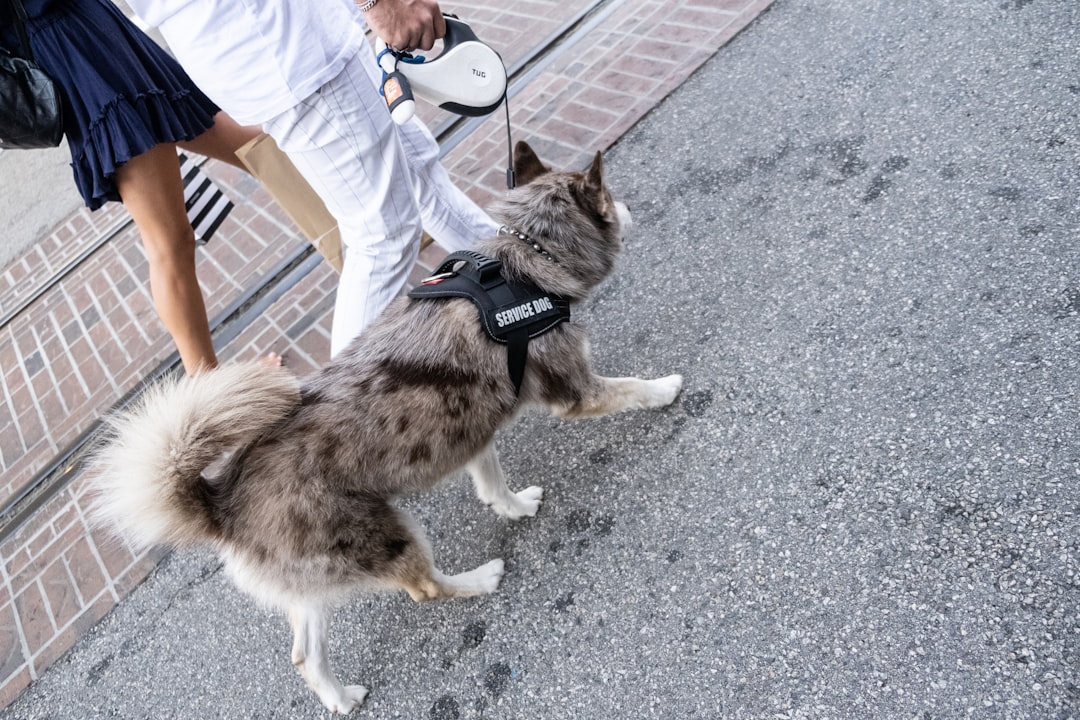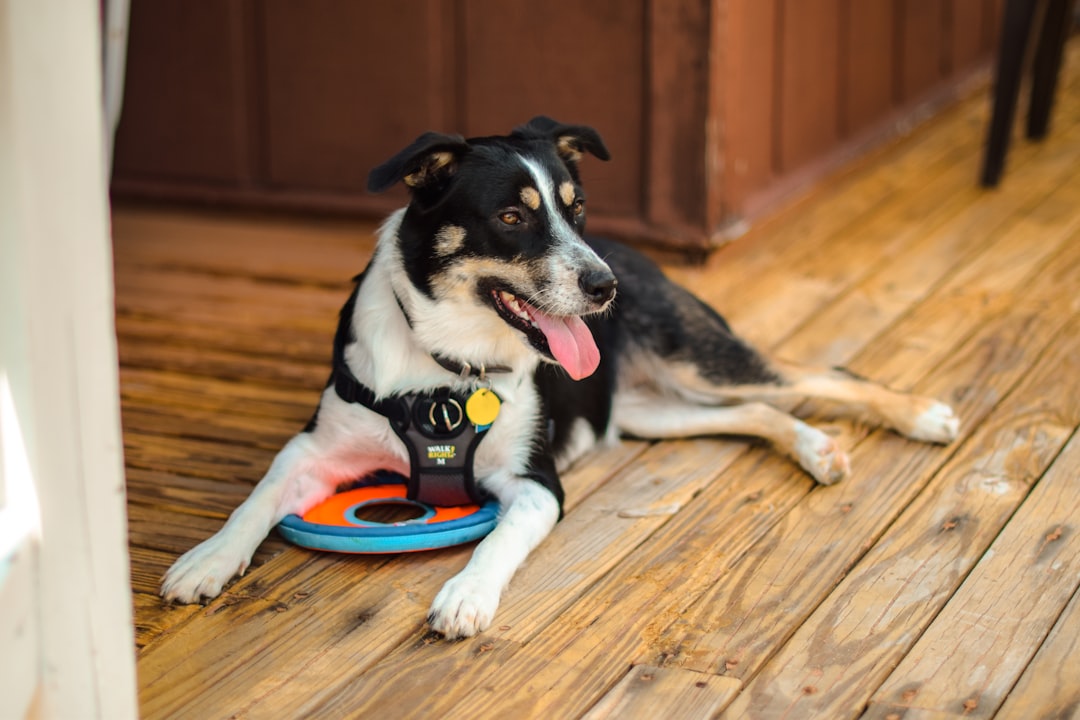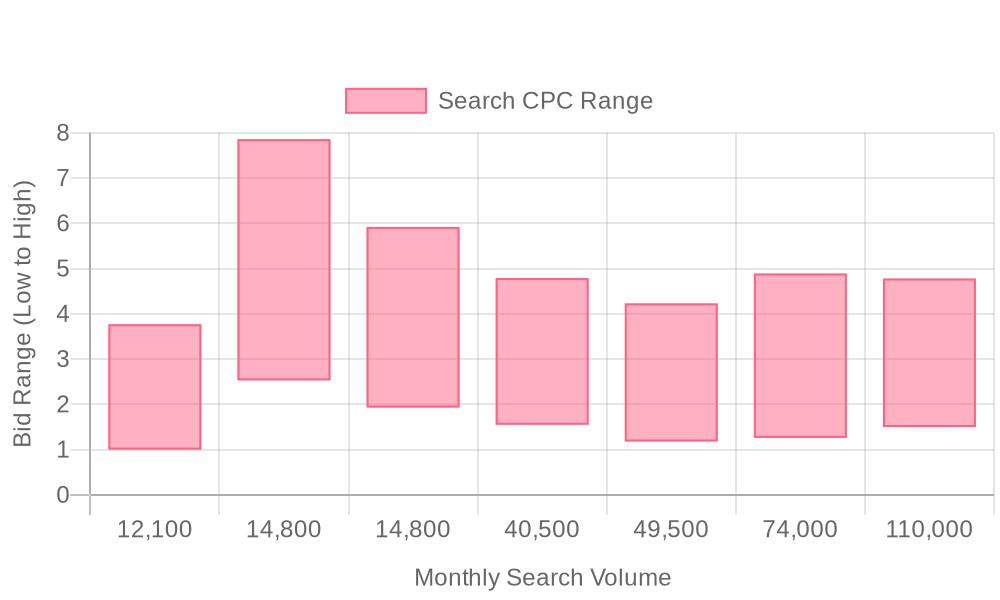
Supercharge your lead generation with a FREE Google Ads audit - no strings attached! See how you can generate more and higher quality leads
Get My Free Google Ads AuditFree consultation

No commitment
Supercharge your lead generation with a FREE LinkedIn Ads audit - no strings attached! See how you can generate more and higher quality leads
Get My Free Google Ads AuditFree consultation

No commitment
Supercharge your lead generation with a FREE Meta Ads audit - no strings attached! See how you can generate more and higher quality leads
Get My Free Google Ads AuditGet My Free LinkedIn Ads AuditGet My Free Meta Ads AuditFree consultation

No commitment
Supercharge your lead generation with a FREE Google Ads audit - no strings attached! See how you can generate more and higher quality leads
Get My Free Google Ads AuditFree consultation

No commitment
In the competitive landscape of service dog marketing, many organizations struggle with capturing high-value prospects effectively. This often results from not having these potential leads properly tracked in a CRM, leading to missed opportunities. Leveraging Google Ads can be a game-changer for both businesses and nonprofits striving to connect with those needing specific offerings like training, adoption, and related services. Google Ads captures high-intent potential clients actively searching for solutions, bridging the gap between awareness and action within this niche.

Effective Google Ads campaigns for service dog organizations and businesses start with actionable data. Marketing teams that unify search intent, audience signals, and real-time engagement consistently outperform those relying on intuition alone. High-value leads rarely wait for slow responses; immediate action, powered by connected systems, leads to more placements, bookings, and donations. For organizations seeking better visibility into which companies and individuals are engaging with their website, Sona Identification reveals these insights and links visitor information to pipeline activity.
A data-driven approach is the foundation for targeted advertising in the service dog sector. Analytical insights reveal which keywords drive qualified leads, which audiences convert fastest, and what messaging resonates with different segments. Marketers who leverage unified data platforms can pinpoint not just anonymous clicks, but the companies and individuals most likely to need service dog training, accreditation, or products. This level of visibility enables smarter budget allocation and faster follow-up with engaged prospects. For a comprehensive overview of strategies tailored to dog trainers, this Google Ads guide for dog training outlines industry best practices.

Service dog organizations and training businesses operate in an environment where visibility directly influences impact. Google Ads delivers immediate access to audiences who are actively searching for specialized support, ensuring outreach efforts align closely with moments of real need. By harnessing Google Ads for dog training, providers can connect with people at the exact time they’re seeking assistance, amplifying the reach and effectiveness of every campaign.

Service dog organizations and training businesses can reach the right audience at every stage of their marketing funnel by deploying the full spectrum of Google Ads campaigns. Each campaign type supports a specific business objective, whether driving immediate consultations, building brand awareness, or nurturing long-term engagement. When these efforts are unified with seamless data flows and real-time visitor insights, organizations can maximize every advertising dollar while ensuring that outreach aligns with users’ needs and intent.
A successful Google Ads strategy for service dog providers depends on selecting the right campaign types and integrating advanced audience and conversion data. This approach not only increases the relevance of each ad impression, but also enables agile budget allocation and ongoing campaign refinement as prospects move through the buyer’s journey.
An integrated Google Ads approach that leverages real-time audience insights, unified conversion data, and dynamic ad delivery ensures that service dog businesses and nonprofits can consistently reach, engage, and convert the people who need their services most. If you’re ready to improve your campaign impact and maximize ROI, get started for free with Sona.

Effective service dog marketing requires more than broad campaigns and generic messaging. Identifying and capitalizing on growth opportunities allows organizations to reach the right audiences, drive meaningful engagement, and maximize advertising investment. For more actionable ideas, explore our marketing analytics blog.
With these approaches, service dog organizations and businesses can shift from generic outreach to precision-driven growth, continually adapting their Google Ads for service dogs and related campaigns for maximum ROI and impact. Ready to transform your marketing strategy? Get started for free with Sona.

Audience segmentation transforms service dog marketing from broad, inefficient outreach to targeted, high-converting digital campaigns. By identifying and addressing the nuanced needs of each audience group, organizations dramatically increase engagement and conversion rates across both nonprofit and commercial service dog initiatives. To explore how Google Ads can support this growth, review this guide to Google Ads for service dog organizations.
Segmentation is essential because generic campaigns dilute messaging and waste ad spend on low-intent traffic. By categorizing visitors based on their unique motivations—such as families in need of an assistance animal versus professionals seeking advanced training solutions—marketing teams can craft highly relevant ad experiences that capture attention and drive action. For additional insights, visit our marketing analytics blog.
Segmentation in service dog marketing is not just about dividing an audience; it is about enabling personalized engagement and full-funnel measurement that turns interest into meaningful results. This approach empowers teams to unify data, capture high-intent leads, and scale impact across every stage of the demand generation journey. For a hands-on experience, get started for free with Sona and see how segmentation can drive measurable results for your organization.

| Industry | Keyword | Monthly Search Volume | Competition Level | Low Bid | High Bid |
| Service Dogs | the farmer's dog cost | 12100 | HIGH | 1 | 3.77 |
| Service Dogs | esa dog | 14800 | HIGH | 2.53 | 7.86 |
| Service Dogs | emotional support dog | 14800 | HIGH | 1.93 | 5.92 |
| Service Dogs | service dogs | 40500 | MEDIUM | 1.55 | 4.79 |
| Service Dogs | dog sitter near me | 49500 | MEDIUM | 1.18 | 4.23 |
| Service Dogs | chewy pharmacy | 74000 | HIGH | 1.26 | 4.89 |
| Service Dogs | dog daycare near me | 110000 | LOW | 1.5 | 4.78 |
Precise targeting is foundational to effective advertising in the service dog industry. A refined keyword strategy ensures your campaigns reach high-intent prospects, drive relevant clicks, and maximize return on ad spend for both nonprofit and commercial service dog organizations. For organizations looking to further optimize their campaigns, this step-by-step guide to leveraging Google Ads outlines proven tactics specifically for service dog and veterinary clinics.
Aligning your keyword strategy with long-tail search queries and service-specific language enhances ad relevance and improves Quality Scores, which directly impacts both ad position and cost efficiency. For example, using a dynamic platform that unifies CRM and ad data enables marketers to identify not only the most searched terms but also the keywords that drive actual conversions from engaged accounts. This level of insight transforms broad keyword lists into dynamic, high-performing segments that evolve as leads progress through the research and buying journey.
Integrating real-time behavioral signals and visitor identification into your keyword strategy enables you to move beyond anonymous clicks. By pinpointing the companies and decision-makers behind high-intent searches, you can allocate budget to audiences that are most likely to convert. As campaign data flows back into your system, dynamic audience lists automatically update—ensuring ongoing relevance as prospects move from inquiry to consideration to conversion. This approach empowers service dog organizations to continuously adapt their targeting and messaging, ultimately delivering more personalized engagement and measurable business outcomes. To see how these capabilities can transform your campaigns, get started for free with Sona and unlock smarter keyword-driven growth.
A precise keyword strategy is foundational for exceptional results in Google Ads for Service Dogs. Segmenting by service type—such as mobility support, PTSD training, or autism service dog programs—ensures ads reach prospects actively seeking specialized solutions. Adding geographic parameters focuses spend on high-value local searches, reaching families and organizations within a serviceable radius. For industry-specific guidance, review this Google Ads for dog trainers resource.
Leverage long-tail keywords like "psychiatric service dog training near me" or "service dog certification for veterans" to capture motivated users ready to engage. Negative keywords, such as "emotional support animal" or "pet obedience," prevent wasted budget on irrelevant clicks. By integrating real-time visitor identification, marketers can dynamically adjust keyword lists in response to true in-market behavior, prioritizing campaigns for audiences demonstrating urgent need or high purchase intent.
Effective ad copy for service dog organizations addresses the prospect’s core pain points in the headline, such as "Regain Independence With a Trained Service Dog" or "Expert PTSD Service Dog Training." Segmenting messaging for parents, veterans, or healthcare professionals speaks directly to each audience’s primary concerns. Incorporate clear incentives—like "Book a Free Consultation" or "Fast-Track Your Application"—to prompt immediate action.
Aligning ad messaging with real-time audience insights enables highly relevant, personalized communication. When a visitor’s behaviors signal urgency or readiness, ad copy automatically shifts to highlight solutions or limited-time offers, increasing engagement and click-through rates. This adaptability is especially powerful when audiences are updated dynamically as leads progress from initial inquiry to qualified prospects.
Landing pages must deliver a seamless experience by reflecting the keyword and ad promise, ensuring users find exactly what was advertised. Incorporating trust symbols such as certifications, partner logos, and verified testimonials increases credibility—vital in the service dog industry where trust is paramount. Prominent calls-to-action, like "Apply Now for a Service Dog" or "Sponsor a Training Program," guide visitors toward conversion with minimal friction.
Integrating advanced conversion tracking empowers marketers to measure both online form submissions and offline outcomes, such as phone consultations or in-person evaluations. This full-funnel visibility reveals which ads and keywords drive real business results, allowing budget to be allocated to the most effective landing page experiences. Cohesive design, reinforced by personalized messaging, strengthens user trust and maximizes conversion rates.
Continuous optimization is essential for high-performing Google Ads campaigns in the service dog sector. Track both micro-conversions (newsletter sign-ups, video views) and macro-conversions (service applications, donations) to gain a comprehensive understanding of campaign performance. Smart bidding strategies, informed by historical data and real-time conversion patterns, help align spend with the actions that matter most.
With unified attribution, marketers can connect ad spend directly to revenue outcomes, regardless of whether conversions happen online or offline. Syncing enriched lead and audience data between Google Ads, CRM, and marketing automation systems ensures remarketing lists and lookalike audiences are always current. This closed-loop approach empowers revenue teams to invest where ROI is highest, making every advertising dollar accountable. To streamline your process, get started for free with Sona.
In conclusion, leveraging Google Ads for service dog-related services requires a strategic approach tailored to your unique offerings. By understanding the nuances of keyword targeting, crafting compelling ad copy, and optimizing your campaigns, you can significantly enhance your visibility and reach your target audience more effectively.
Throughout this article, we've explored the challenges of advertising service dog services and have provided strategies to overcome them. From identifying relevant keywords to maximizing your ad spend through smart bidding strategies, the insights shared aim to equip you with practical tools for success in this specialized market.
The potential to transform your advertising efforts is within reach. By applying these strategies, you can elevate your brand's presence and connect with those who need your services most. Embrace the opportunity to refine your approach and see tangible results in your advertising campaigns.
To further enhance your marketing initiatives, consider integrating advanced tools that unify your data and provide actionable insights. Start for free
To effectively use Google Ads for service dog training, start with a data-driven approach by analyzing user behavior and search trends to refine your strategy. Use targeted keywords and audience signals to capture high-intent prospects actively searching for solutions.
Best practices include using segmented keyword lists, aligning ad copy and landing pages with user intent, and employing performance optimization tactics like A/B testing and real-time budget adjustments.
Yes, specific keywords such as 'service dog training programs,' 'service dog for PTSD,' and 'service dog certification near me' are effective for targeting high-intent prospects.
Allocating budget should be based on a data-driven approach, ensuring that spend is focused on high-value keywords and audience segments that drive actual conversions.
Success can be measured by tracking conversions and performance metrics such as click-through rates and conversion rates, and by integrating conversion data across online and offline channels.
Join results-focused teams combining Sona Platform automation with advanced Google Ads strategies to scale lead generation

Connect your existing CRM

Free Account Enrichment

No setup fees
No commitment required

Free consultation

Get a custom Google Ads roadmap for your business
Join results-focused teams combining Sona Platform automation with advanced Meta Ads strategies to scale lead generation

Connect your existing CRM

Free Account Enrichment

No setup fees
No commitment required

Free consultation

Get a custom Google Ads roadmap for your business
Join results-focused teams combining Sona Platform automation with advanced LinkedIn Ads strategies to scale lead generation

Connect your existing CRM

Free Account Enrichment

No setup fees
No commitment required

Free consultation

Get a custom Google Ads roadmap for your business
Join results-focused teams using Sona Platform automation to activate unified sales and marketing data, maximize ROI on marketing investments, and drive measurable growth

Connect your existing CRM

Free Account Enrichment

No setup fees
No commitment required

Free consultation

Get a custom Google Ads roadmap for your business
Over 500+ auto detailing businesses trust our platform to grow their revenue
Join results-focused teams using Sona Platform automation to activate unified sales and marketing data, maximize ROI on marketing investments, and drive measurable growth

Connect your existing CRM

Free Account Enrichment

No setup fees
No commitment required

Free consultation

Get a custom Google Ads roadmap for your business
Over 500+ auto detailing businesses trust our platform to grow their revenue
Join results-focused teams using Sona Platform automation to activate unified sales and marketing data, maximize ROI on marketing investments, and drive measurable growth

Connect your existing CRM

Free Account Enrichment

No setup fees
No commitment required

Free consultation

Get a custom Google Ads roadmap for your business
Over 500+ auto detailing businesses trust our platform to grow their revenue
Our team of experts can implement your Google Ads campaigns, then show you how Sona helps you manage exceptional campaign performance and sales.
Schedule your FREE 15-minute strategy sessionOur team of experts can implement your Meta Ads campaigns, then show you how Sona helps you manage exceptional campaign performance and sales.
Schedule your FREE 15-minute strategy sessionOur team of experts can implement your LinkedIn Ads campaigns, then show you how Sona helps you manage exceptional campaign performance and sales.
Schedule your FREE 15-minute strategy sessionOur team of experts can help improve your demand generation strategy, and can show you how advanced attribution and data activation can help you realize more opportunities and improve sales performance.
Schedule your FREE 30-minute strategy sessionOur team of experts can help improve your demand generation strategy, and can show you how advanced attribution and data activation can help you realize more opportunities and improve sales performance.
Schedule your FREE 30-minute strategy sessionOur team of experts can help improve your demand generation strategy, and can show you how advanced attribution and data activation can help you realize more opportunities and improve sales performance.
Schedule your FREE 30-minute strategy sessionOur team of experts can help improve your demand generation strategy, and can show you how advanced attribution and data activation can help you realize more opportunities and improve sales performance.
Schedule your FREE 30-minute strategy session





Launch campaigns that generate qualified leads in 30 days or less.
